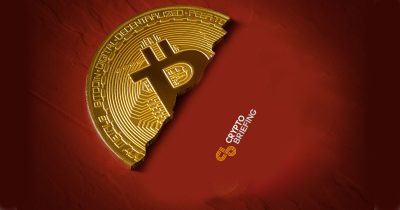What Happens When Bitcoin Block Rewards Fall?
The last two halvings were accompanied by an increase in price. Will the same happen in 2020?

Share this article
The next bitcoin block reward halving will occur in roughly 57,000 blocks, putting in somewhere in May 2020. Based on the last two halvings, many expect Bitcoin to see major price gains after the supply falls, but there’s no guarantee that the pattern will hold.
Half The Rewards, A Slowdown in Supply
The algorithmic reduction in inflation has always been a part of the Bitcoin protocol’s design. It was established to ensure that bitcoin remains valuable. Cutting block rewards and setting a maximum possible supply at 21 million BTC give the cryptocurrency an anti-inflationary property that flies in the face of Central Banks’ propensity to print money at will.
There are currently around 17.5 million bitcoins in circulation, with less than 3.5 million left to be mined. When the next halving event takes place, it will give bitcoin an inflation rate of around 1.8 percent per year, down from its current 3.8 percent. That will mark the first time in history that BTC falls below gold’s historical average supply growth of around 2-3 percent.
What Happens To The Price?
In 2012 and 2016, industry pundits observed a significant run-up in price about a year before the halving event. After the halving, prices rose parabolically. That has prompted predictions that the same could be expected of the May 2020 halving, leading some speculators to start buying now.
Yet the figures aren’t exactly so clear-cut. It took two months for prices to rise after the 2012 halving, and one month in 2016: hardly a dramatic and immediate response to the deflationary events. In other words, this could easily be explained by the “buy the rumor, sell the news” strategy which some speculators implemented.
Will May 2020 Be Any Different?
There are many reasons to expect why the May 2020 halving might be different. First, bitcoin observers now know what to expect, having already seen two such events. The effects of the upcoming reward change may already be reflected in the price.
If that happens, miners may find themselves penalized instead. They are currently rewarded with 12.5 bitcoin for every block mined. When that falls to 6.25 BTC per block, miners need prices to rise to compensate for the loss of revenue.
But if the expected halving boom is already baked into bitcoin’s current price (for example, by speculators bidding the prices up in anticipation of a post-halving bull run) we might actually see a collapse in mining. With revenues halved, many miners could turn their unprofitable machines off.
Generally speaking, we expect assets to become more expensive when they become scarce. Halving has the potential, then, to double the price of bitcoin overnight. The reason that hasn’t happened in the past is the pre-emptive run-up to the halving event and the lag effect of a reduced lack of supply hitting the market.
There is a further complication to the effect of the halving, which is that many miners typically sell their bitcoin for fiat as they earn it, which means the supply of bitcoin is not quite as scarce as the supply algorithm intended.
That complication is exacerbated by the fact that demand for bitcoin is not as strong as its proponents might like, as it has yet to achieve serious adoption. Even with a diminished supply, prices are unlikely to reach a satisfactory equilibrium without consumer demand.
A mining shutdown would be as catastrophic as it is unlikely. But it isn’t implausible, any more than a parabolic rise in price. Whatever happens, the lead up to bitcoin’s third halving is going to be interesting to watch.
Share this article
